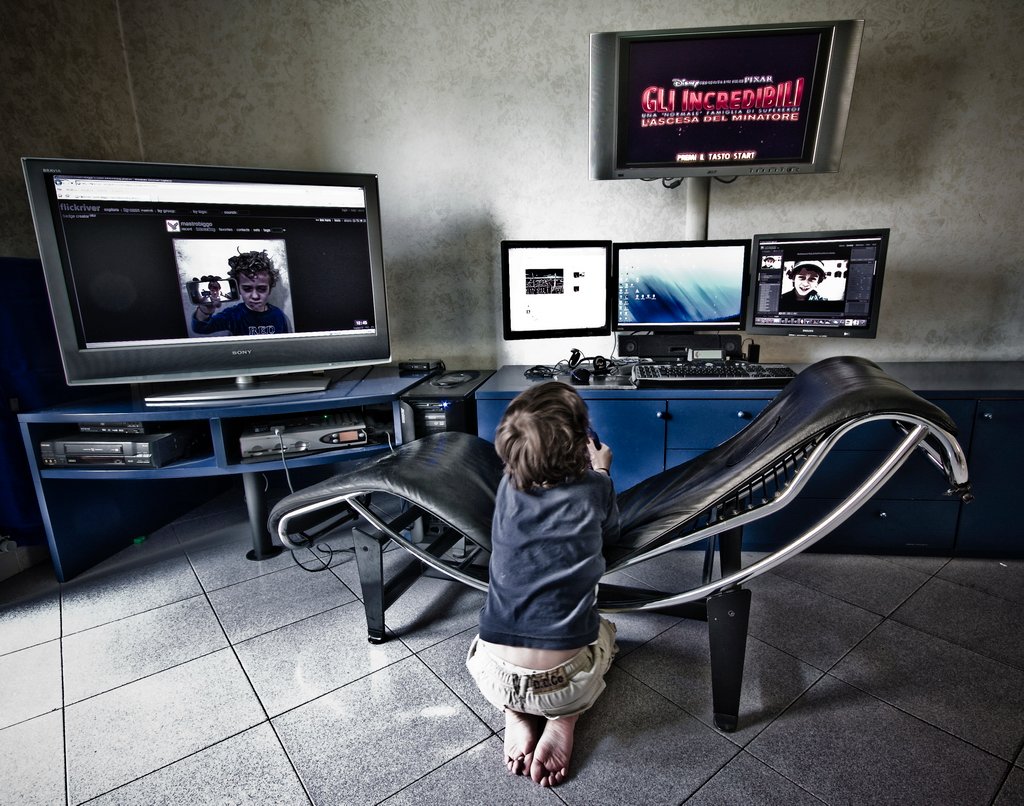As the sun sets on a distant alpine village, one cannot help but wonder about the secrets secured behind the sturdy wooden doors of ancient civilizations. Locks, designed to safeguard treasures, mysteries, and even potential threats, have long fascinated the human mind. Today, we find ourselves in possession of an incredible tool – the locksport time machine. Delving into the minds of lockpickers from bygone eras, we embark on a journey to unravel the thoughts and techniques of these ancient craftsmen. Join us as we unlock the intriguing narrative of history’s locksmiths and delve into the captivating question: What would they think of our modern locksport techniques?
Table of Contents
- Unlocking the Secrets of Ancient Lockpicking Techniques
- Understanding the Evolution of Locks and Lockpicking
- Exploring the Impact of Modern Technology on Locks and Lockpicking
- A Glimpse into the Minds of Ancient Lockpickers
- Preserving the Ancient Art of Lockpicking: Recommendations for Locksmiths
- Q&A
- Insights and Conclusions

Unlocking the Secrets of Ancient Lockpicking Techniques
Throughout history, mankind has always had a fascination with locks and the art of bypassing them. Ancient civilizations crafted intricate devices to protect their treasures and secrets, and skilled lockpickers were revered for their abilities. Even though technology has advanced and modern locks have become increasingly complex, the techniques devised by these ancient locksmiths continue to hold valuable insights for locksmiths and enthusiasts alike.
One of the prominent techniques used in ancient lockpicking was called “raking.” This method involved using a specially crafted tool, known as a rake, to manipulate the pins inside a lock simultaneously. By strategically applying pressure and gently moving the rake up and down, lockpickers could potentially unlock the mechanism without having to individually set each pin.
- Another fascinating technique employed by ancient locksmiths is “impressioning.” This intricate method required the lockpicker to meticulously study a lock’s keyway and make educated guesses about the key’s shape. By using a blank key and a filing tool, they would create a key that precisely matched the lock’s internal mechanism through trial and error, until eventually the lock succumbed to the custom-made key.
- Additionally, the ancient art of lockpicking often involved utilizing tools like skeleton keys, which were generic keys that could fit a variety of locks. These versatile keys, with their simplified shape and size, allowed locksmiths to quickly and effortlessly unlock a multitude of locks.
By exploring and understanding these ancient lockpicking techniques, modern locksmiths and lock enthusiasts are able to expand their knowledge and skill set. These methods provide invaluable insights into the complex inner workings of locks and the art of manipulation. While technological advancements continue to shape the world of locks, the secrets of ancient lockpicking techniques continue to captivate and inspire both professionals and hobbyists alike.

Understanding the Evolution of Locks and Lockpicking
Throughout history, locks have played a crucial role in securing our valuables and protecting our privacy. The evolution of locks and the art of lockpicking have seen intriguing advancements over the centuries, showcasing both remarkable innovation and the unyielding determination of those seeking to bypass them.
Locks have come a long way since their humble beginnings. From ancient wooden mechanisms to intricate electronic systems, their designs have evolved to withstand the test of time and circumvent the ever-advancing methods of would-be intruders.
Key Highlights of Lock Evolution:
- Early innovations: Discover the ingenious mechanisms employed in ancient Egyptian, Greek, and Roman locks, relying on complex configurations of pins and tumblers.
- Industrial revolution: Explore the impact of advancements in metallurgy and mass production, giving rise to sturdier locks, sophisticated key designs, and the birth of modern locksmithing trades.
- From mechanical to digital: Witness the revolution of locks in the digital age, as they integrate cutting-edge technologies like biometrics, smart sensors, and wireless connectivity to enhance security and convenience.
Lockpicking, on the other hand, is an art form that emerged alongside locks themselves. Steeped in both the skillful artistry and dubious nature of bypassing security measures, lockpicking has captivated many throughout history.
The Intricate World of Lockpicking:
- The pick and the tension wrench: Understand the essential tools of the trade that enable lockpickers to manipulate the pins and tumblers within locks.
- Techniques and strategies: Delve into the various methods employed by lockpickers, from the classic single-pin picking to more advanced techniques like raking and bumping.
- Ethical considerations: Explore the ethical debates surrounding lockpicking, as it can be used both for legitimate purposes by locksmiths and for illicit activities by individuals seeking unauthorized access.
By gaining a deeper understanding of the evolution of locks and the intricacies of lockpicking, we can appreciate the complexity and craftsmanship involved in these vital tools of security.

Exploring the Impact of Modern Technology on Locks and Lockpicking
Locks have come a long way since their humble beginnings, and with the advent of modern technology, their functionality and security have undergone a revolution. Gone are the days of simple mechanical locks; now, we find ourselves in an era where electronic locks, biometric systems, and smart locks have become the new norm. The integration of technology in locks has had a significant impact on both security and lockpicking techniques.
Enhanced Security:
One of the most remarkable impacts of modern technology on locks is the heightened level of security they provide. Traditional lockpicking techniques, from bumping to picking, have become increasingly ineffective against the advanced mechanisms incorporated into modern locks. Biometric locks, for instance, rely on unique characteristics such as fingerprints or iris patterns, making them nearly impossible to bypass or duplicate. Electronic locks often use complex cryptographic algorithms and secure communication protocols, adding an extra layer of protection. With technology constantly evolving, we can expect even more sophisticated security features in the future.
Challenges for Lockpicking:
While modern technology has undoubtedly bolstered security, it has also presented new challenges for lockpicking enthusiasts. Gone are the days when a simple set of lockpicks could open most locks. Today, lockpickers need to master new techniques, such as bypassing electronic components or exploiting vulnerabilities in smart locks’ digital interfaces. As technology advances, the knowledge and skills required to pick locks must keep pace.

A Glimpse into the Minds of Ancient Lockpickers
Imagine being transported back in time to ancient civilizations where lockpicking was not a nefarious act but a respected skill. These ancient artisans possessed a profound understanding of the intricate mechanisms hidden within locks, and their ingenuity continues to intrigue us to this day. Let’s delve into the minds of these master lockpickers and explore the secrets they held.
The Art of Observation
No detail escaped the meticulous eyes of ancient lockpickers. Their ability to observe every minute feature of a lock was crucial in unraveling its secrets. They would spend hours studying the smallest clues – the worn edges, the minuscule scratches, and the gentle sound it produced when manipulated. Through their keen observation, these lockpickers developed an intimate knowledge of each lock’s vulnerabilities, enabling them to craft solutions with unparalleled precision.
The Language of Tools
Armed with a seemingly endless array of tools, ancient lockpickers approached their craft as a dance between man and metal. Their collection contained delicate picks, tension wrenches, and key extractors, each serving a distinct purpose. They fully understood the language of their tools and the tactile feedback they provided. With finesse and dexterity, they would expertly navigate the concealed chambers and tumblers within a lock, coaxing it open with gentle persuasions.
Unlocking the Mind
Beyond their technical mastery, ancient lockpickers possessed an innate curiosity and an unwavering pursuit of knowledge. They had an insatiable hunger to understand the inner workings of locks, pushing the boundaries of what was possible. It was through this combination of skill and intellectual curiosity that these remarkable individuals forever changed the art of lockpicking.
Preserving the Ancient Art of Lockpicking: Recommendations for Locksmiths
Locksmiths play a crucial role in preserving the ancient art of lockpicking. As experts in their craft, they have the responsibility to not only safeguard people’s security but also maintain the integrity of this time-honored skill. Here are some recommendations for locksmiths to ensure the preservation and advancement of lockpicking techniques:
1. Constant Learning: Locksmiths should keep themselves updated with the latest advancements in lock technology and techniques. Attending workshops, conferences, and seminars can broaden their knowledge and enhance their skills. Embracing continuous learning allows locksmiths to stay at the forefront of their field, enabling them to tackle any lock with confidence.
2. Research and Experimentation: Encouraging locksmiths to conduct their own research and experimentation can lead to breakthroughs in lockpicking techniques. By exploring alternative methods and materials, locksmiths can contribute to the evolution of lockpicking as an art. Emphasizing the importance of innovation within the boundaries of legality and ethical practice is key to preserving this ancient craft.
3. Mentorship and Collaboration: Experienced locksmiths should offer mentorship to aspiring locksmiths, passing down their knowledge and expertise. This creates a supportive environment for the growth of new talent while ensuring the transfer of traditional lockpicking techniques from one generation to the next. Collaborating with fellow locksmiths and sharing ideas can also lead to the refinement and improvement of lockpicking techniques.
By adhering to these recommendations, locksmiths can contribute to the preservation and advancement of the ancient art of lockpicking. It is through their dedication to learning, research, innovation, and mentorship that this invaluable craft will continue to thrive in the modern world.
Q&A
Q: What is “The Locksport Time Machine: What Would Ancient Lockpickers Think?” article about?
A: This article explores the hypothetical scenario of ancient lockpickers being confronted with modern locks and tools, delving into the potential reactions and observations they might have.
Q: How would an ancient lockpicker react to modern locks?
A: Ancient lockpickers would likely be astonished by the complexity and precision of modern locks, as they were accustomed to comparatively rudimentary locking mechanisms. They might appreciate the advancements in locksmithing techniques and marvel at the intricate designs.
Q: Would ancient lockpickers be able to successfully pick modern locks?
A: While ancient lockpickers possessed great skill, their expertise was mostly limited to simpler locks. Modern locks, with their advanced technology and complex mechanisms, would likely prove to be a significant challenge for them, requiring a new set of techniques to conquer.
Q: How might ancient lockpickers view modern lock-picking tools?
A: Ancient lockpickers would find modern lock-picking tools extraordinary, as they primarily relied on crude tools made of bone or wood. Witnessing the precision and efficiency of contemporary tools, they would likely perceive them as remarkable innovations in their craft.
Q: Do ancient lockpickers possess any knowledge that could benefit modern locksmiths?
A: Ancient lockpickers had a deep understanding of lock mechanisms and were adept at improvising with limited resources. While their methods might not directly apply to modern locks, their resourcefulness and problem-solving skills could inspire locksmiths to think innovatively.
Q: How might ancient lockpickers’ expertise in social engineering be relevant today?
A: Ancient lockpickers often relied on social engineering to manipulate individuals and gain access to locked areas. Their skills in persuasion, observation, and psychological manipulation could be an interesting perspective for contemporary locksmiths and security professionals to consider for improving their practices.
Q: Would ancient lockpickers appreciate the evolution of lock technology?
A: It is likely that ancient lockpickers would have a mix of admiration and awe for the evolution of lock technology. While they might reminisce about the simplicity of ancient locks, they would also recognize the immense progress made in terms of security and craftsmanship in modern locks.
Q: How can the knowledge of ancient lockpickers be preserved and shared?
A: To preserve the knowledge of ancient lockpickers, it’s crucial to document and study historical texts, artifacts, and any available accounts from that era. Sharing this knowledge through academic research, publications, and educational programs can ensure the lessons learned from the ancient lockpickers continue to inspire future generations of locksmiths.
Insights and Conclusions
As we wrap up our journey through the fascinating world of ancient locksport, take a moment to ponder the intriguing question: what would the ancient lockpickers think if they were to witness the evolution of their craft in the modern world?
Transport yourself back in time, to a realm where intricate mechanisms concealed secrets and challenged the skill of those daring enough to crack them. Picture the ancient lockpicker, immersed in a clandestine world, honing their talent until they could hear the heartbeat of a lock, the whispers of the tumblers dancing within.
Imagine their astonishment, their eyes widened with both amazement and curiosity, as they would reluctantly find themselves in the present day. A world where leaps of invention and centuries of innovation have molded the craft they once cherished into a technological marvel far beyond their wildest dreams.
Would they marvel at the sleek, electronic wonders that magically release bolts with a mere touch? Or would they be confounded, unable to comprehend the intricate algorithms and digital sorcery required to outwit these modern fortifications?
Perhaps their minds would wander back to their own ancient devices, with their elegant simplicity, their reliance on metal and ingenuity alone. Would they find solace in the knowledge that their skills were still relevant even amidst this sea of electronic marvels?
One can’t help but wonder if the ancient lockpicker, steeped in tradition and the echoes of their craft’s illustrious history, would be appalled or exhilarated by the rapid advancement of technology. They might shake their heads in disbelief, or perhaps, with a twinkle in their eye, they would view this brave new world as an open invitation to sharpen their skills once more.
As we bid adieu to the lockpickers of yore, let us honor their artistry, their indomitable spirit, and the timeless intrigue they brought to the world of security. For in their dedication to unlocking secrets, they left behind a legacy that continues to reverberate through the ages.
So, the next time you contemplate the precision of a modern lock, take a moment to acknowledge the lockpickers of antiquity. For it is their ingenuity, their unwavering pursuit of knowledge and skill that paved the way for the dazzling world of locksport that captivates us even today.
And as we sign off, remember that the spirit of those ancient lockpickers lives on, whispering through the gears and tumblers, reminding us that the quest for knowledge and the challenge of conquering the unyielding shall forever be an integral part of the human journey.
As an affiliate, my content may feature links to products I personally use and recommend. By taking action, like subscribing or making a purchase, you’ll be supporting my work and fueling my taco cravings at the same time. Win-win, right?
Want to read more? Check out our Affiliate Disclosure page.